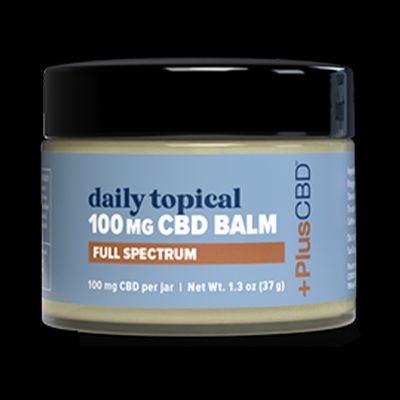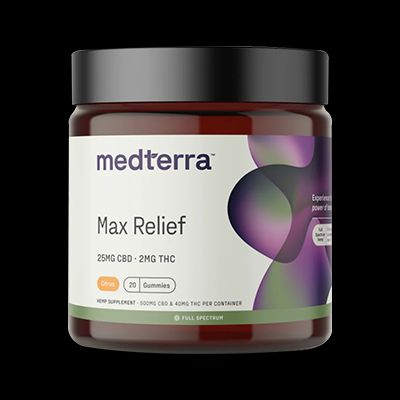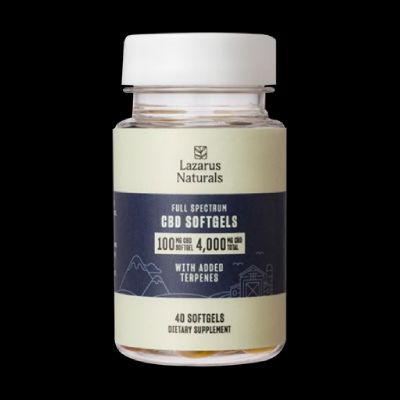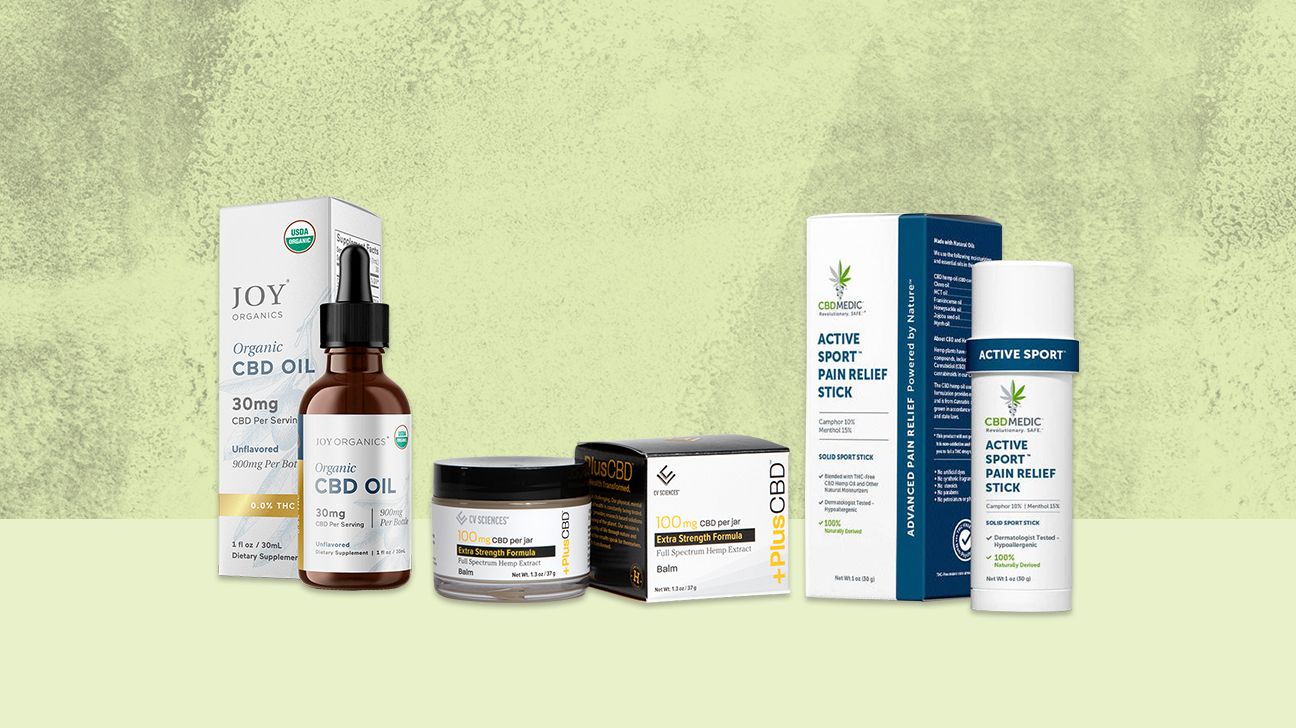Many people consider using CBD for pain management. Research suggests it may be helpful, but more long-term work is necessary. Here, we review our favorite picks, which have undergone expert vetting.
CBD is one of several cannabinoids naturally present in the cannabis plant. A vast range of CBD products, including oils, tinctures, and balms, may help people experiencing physical pain.
This article discusses how CBD products may help relieve pain. It also provides a list of potentially effective CBD products that have undergone extensive third-party testing for safety.
Below, we look at the best CBD products for pain. Our CBD testers give their experiences on using some of the products we included in this roundup.
Below, we compare the CBD products in this article for price, strength, and more.
| Strength | Key ingredients | Price | |
|---|---|---|---|
Joy Organics | 15 to 75 mg broad-spectrum | • organic CBD • olive oil | from $49.95 |
PlusCBD | 100 mg full-spectrum | • CBD • almond oil • beeswax | $35.99 |
 | 25 mg full-spectrum | • CBD • THC • tapioca • cane sugar • pear juice | from $34.99 |
Lazarus Naturals | 100 mg full-spectrum | • CBD • flaxseed oil • coconut MCT oil • sweet orange oil | $80 |
Medical News Today chooses CBD products for pain relief based on criteria we think are good indicators of safety, quality, and transparency.
As a part of our vetting process, we consider:
- the product’s composition, ingredients, and overall quality
- any third-party certifications
- the company’s reputation and business practices
- any lab test results
- marketing claims
Medical News Today follows a strict product selection and vetting process. Learn more here.
A person can consider the following when buying a CBD product for pain management:
- Strength: CBD products come in a range of strengths. People who have not used CBD products before should start with a low-strength product and build up until they get the needed effects to manage their pain.
- THC content: Hemp products with less than 0.3% THC are legal on a federal level. A person should check the THC content before making a purchase.
- Hemp source: People can consider CBD products from companies that responsibly source their hemp. Many companies use hemp that grows in the United States.
- Form: CBD products can come in oils, ointments, creams, patches, or gels. People can consider how convenient their chosen product will be to apply, whether it suits different skin types, and how long the product will last.
- Cost: Some CBD products can be expensive. People should consider how often they will need to use their CBD product to manage their pain and choose a product that will fit their budget and be effective.
- COA: A person should consider products from companies that provide a COA, a document containing information about the product’s CBD potency, THC and other cannabinoids, and safety test results. A person can find COAs on a brand’s website or by contacting the brand directly.
- Reputable supplier: People should look for high quality products from reputable manufacturers and retailers when shopping for CBD. These companies test every batch of their products via an independent third-party lab for purity, showing that the product does not contain harmful metals or toxins. Products that undergo third-party testing will have a COA.
Read our complete buyer’s guide to CBD.
CBD comes in several different forms, including:
- oils and tinctures
- gummies
- oral capsules or pills
- creams, balms, and salves
- topical patches
CBD gummies and capsules are for oral ingestion. On the other hand, topical CBD products are for external use only. People can apply these products to specific body areas, such as sore muscles or aching joints.
CBD oils and tinctures are more versatile than other forms and usually come in tinted glass bottles with a dropper. People can either add a few drops of CBD oil to food or beverages or place them under their tongue, where they can hold the oil for up to 1 minute before swallowing. However, people may not feel the effects of CBD oil for one or more hours after using it.
Individuals should follow the directions and dosage information on the CBD product label.
There is some evidence that CBD can benefit pain. Read on to learn how effective CBD can be for inflammation, chronic pain, and arthritis.
CBD for inflammation
A
CBD for chronic pain
CBD for arthritis pain
A
Authors of a
Learn more about CBD for arthritis.
While more research, such as large-scale, high quality clinical trials, is still necessary, these preliminary studies suggest CBD may help manage pain. A
How does CBD work for pain?
There are compounds in the cannabis plant called endogenous and exogenous cannabinoids. Endogenous cannabinoids are naturally occurring lipids that the body produces. However, the body does not produce exogenous cannabinoids. Exogenous cannabinoids include CBD, THC, cannabichromene (CBC), and cannabigerol (CBG).
Cannabinoids, both endogenous and exogenous, bind to endocannabinoid receptors attached to cells. These include cannabinoid 1 and cannabinoid 2 receptors. This binding action stimulates different cell responses that influence pain signaling pathways.
As with any substance with claimed therapeutic effects, there can be advantages and drawbacks to taking CBD for pain.
Unlike more conventional prescription pain medications, research into the benefits of CBD for pain is still in its infancy. So, scientific evidence of safe and effective doses and long-term effects is limited.
However, some studies explore CBD’s more immediate safety and effectiveness.
For instance, one
Among those who substituted cannabis, 65.8% found it much more effective than prescription medication. Additionally, 85.5% said they experienced much worse side effects from prescription drugs than from cannabis.
However, the researchers highlighted a need for more long-term research into using cannabis to treat medical conditions. It is also important to note that the people completing the survey were already using cannabis before the study started, which could have affected their responses.
CBD resources
Visit our dedicated hub for more research-backed information and in-depth resources on CBD.
Benefits and disadvantages
In light of the opioid crisis, reducing reliance on addictive opioids is one of the main potential benefits of prescribing cannabis to treat pain.
For instance, a study from 2021 found that cannabis reduced opioid use by an
Additionally,
However, disadvantages of using CBD for pain include potential interactions with other medications a person may be taking, such as arthritis medication.
Other disadvantages include the side effects of medical cannabis. According to the United Kingdom’s National Health Service (NHS), these may include diarrhea, nausea, weakness, and dizziness. People may also experience hallucinations or have suicidal thoughts.
Help is out there
If you or someone you know is in crisis and considering suicide or self-harm, please seek support:
- Call or text the 988 Lifeline at 988 or chat at 988lifeline.org. Caring counselors are available to listen and provide free and confidential support 24/7.
- Text HOME to the Crisis Text Line at 741741 to connect with a volunteer crisis counselor for free and confidential support 24/7.
- Not in the United States? Find a helpline in your country with Befrienders Worldwide.
- Call 911 or your local emergency services number if you feel safe to do so.
If you’re calling on behalf of someone else, stay with them until help arrives. You may remove weapons or substances that can cause harm if you can do so safely.
If you’re not in the same household, stay on the phone with them until help arrives.
Side effects of CBD
More severe side effects include:
- liver damage
- fertility problems in males
- potentially severe interactions with alcohol and certain medications
People always need to start at the lowest possible dose of CBD, then increase the dosage gradually until they reach their desired effect. However, they should not exceed their product’s recommended dosage.
Research is still to determine what CBD dose is most effective for pain management.
When buying CBD oil for pain, people can consider the type of CBD it contains and its potency. Full-spectrum oil may be stronger but can expose a person to THC. A stronger oil may have more noticeable effects but may not be suitable for beginners. People should also research brands to see if they recommend their CBD oils for pain.
The strength of CBD a person needs to manage pain depends on their individual condition and the severity of their pain. Ideally, a person needs to speak with a healthcare professional before taking any CBD for pain.
They need to start with the lowest dose possible and work up to a dose that has the desired effect in reducing their pain. However, a person should not exceed the maximum dose stated on the product label.
If a person is looking for targeted pain relief with a CBD product, a cream or ointment will be best. A CBD oil or gummy may be better for people who want more widespread pain relief.
A CBD cream, balm, or ointment may be best for back pain as a person can apply it directly to the painful area. However, people with back pain should speak with a doctor to understand the cause of their pain and the most effective treatments.
CBD for pain management shows promise in preliminary clinical studies, and animal studies suggest CBD may help relieve pain. However, more research is necessary to evaluate these findings.
CBD is generally safe but can lead to side effects, such as tiredness and appetite changes. People should speak with a doctor before using CBD for pain management, as there may be more appropriate treatments for their particular condition.
Is CBD legal?The 2018 Farm Bill removed hemp from the legal definition of marijuana in the Controlled Substances Act. This made some hemp-derived CBD products with less than 0.3% THC federally legal. However, CBD products containing more than 0.3% THC still fall under the legal definition of marijuana, making them federally illegal but legal under some state laws. Be sure to check state laws, especially when traveling. Also, keep in mind that the FDA has not approved nonprescription CBD products, and some products may be inaccurately labeled.



